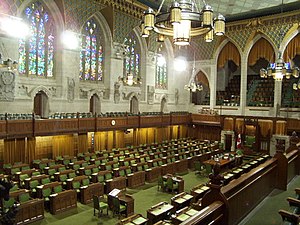 of Sumatra, with over 800,000 inhabitants.
of Sumatra, with over 800,000 inhabitants.Closer to home, forest fires caused by lightning strikes wipe out thousands of trees every year on the west coasts of Canada and the United States. People living in the areas often have to flee their homes, evacuating to emergency shelters, wondering if their homes will still be there when they return.
More powerful tornadoes run through the American Tornado Alley – an area which runs roughly from the Rocky Mountains to the Appalachian Mountains – destroying homes and property.
The power of Mother Nature’s wrath is urging ever stronger, as storm systems causing these weather related phenomenon get all the more powerful.
In many ways, it is the natural cycle of nature. With every flash flood, drought, hurricane, or forest fire brought on by a lightning strike, old growth is killed off, leaving room for new plants, trees, animals and other living things. It’s Mother Nature’s way of cleaning house – so-to-speak.
What is unusual is the increased power behind these already very powerful weather systems and this is because of global warming.
As the Earth’s temperatures increase, so to do the massive water bodies which compose most of the globe – our planet is 70% water.
Oceans, lakes, rivers and streams all warm, and this warm water is just the fuel needed to turn a simple summer storm into a killer storm.
Cloud formations blow across these warm waters, soaking up the warm moisture, which in turn creates storm clouds of immense power. The warmer the water absorbed into these clouds, the more viciously powerful the activity caused by that cloud becomes.
By the time these clouds hit land, they are bursting at the seams with a forceful fury – massive hurricane-gust winds, lightening, the ability to generate tornadoes, and other unruly things.
Earthquakes such as the one which occurred this morning in Indonesia, are also due to Global Warming.
 Image via Wikipedia
Image via Wikipedia
The tectonic plates underneath all land masses on our planet are in a constant planetary ballet, scampering across the planet. These tectonic plates constantly collide with one another, and as is the case with the Indonesian earthquake, force massive amounts of the Earth’s crust up and out of the planet’s core in the form of volcanic eruptions.
A 40,000KM horseshoe-shaped area in the Pacific ocean, called The Ring of Fire, is where about 90 percent of the world’s earthquakes occur and about 80 percent of the world’s largest earthquakes take place there. Named because of the 452 volcanoes which line this region, global warming is having a grave impact on those who’s lives can change in an instant, when the Earth hiccups via a volcanic explosion.
As the Earth’s core temperature increases, pressure builds, which is eventually released during a volcanic eruption.
These eruptions can occur via volcanoes on land, or underwater. Either way, the escaping material is all that is needed to cause violent earthquakes, such as the one which was the cause of the earthquake in Indonesia today.
Volcanic eruptions in of themselves can cause much harm. From destroying entire towns and cities by covering them in thick layers of dust and ash, to molten lava flows which can wipe out entire civilizations, to the aftershocks, leading to tsunamis and other extremely dangerous phenomenon.
These things all did occur long before human beings walked on the planet – but since we’ve taken over the world’s ecosystem, they have become stronger, and more dangerous to us, and every other living thing on the planet.
![Reblog this post [with Zemanta]](http://img.zemanta.com/reblog_b.png?x-id=d7cbc09a-003b-49e0-9bf6-3b8336dd365a)

![Reblog this post [with Zemanta]](http://img.zemanta.com/reblog_b.png?x-id=8354aa16-97a8-4686-989d-c4a944ad3e1c)



![Reblog this post [with Zemanta]](http://img.zemanta.com/reblog_b.png?x-id=142df709-f45e-4443-8a81-3797f3f8803d)


![Reblog this post [with Zemanta]](http://img.zemanta.com/reblog_b.png?x-id=9c119351-5e4d-4612-adf8-10168dd4e9c5)

![Reblog this post [with Zemanta]](http://img.zemanta.com/reblog_b.png?x-id=788ccce3-e9a1-49e5-9177-af4048af8db5)

![Reblog this post [with Zemanta]](http://img.zemanta.com/reblog_b.png?x-id=c0cb8002-a43e-4469-b156-34ea69d72f2c)


![Reblog this post [with Zemanta]](http://img.zemanta.com/reblog_b.png?x-id=72f3b8d6-4078-4d44-9cae-7bb0da634ea5)



![Reblog this post [with Zemanta]](http://img.zemanta.com/reblog_b.png?x-id=7236a1fe-2535-4e94-ad53-26ef2908c822)


![Reblog this post [with Zemanta]](http://img.zemanta.com/reblog_b.png?x-id=e9a54a0b-0e4d-4830-9b60-e9a1047ef4be)


![Reblog this post [with Zemanta]](http://img.zemanta.com/reblog_b.png?x-id=e7897fe7-db52-406e-ad23-594970057a78)







